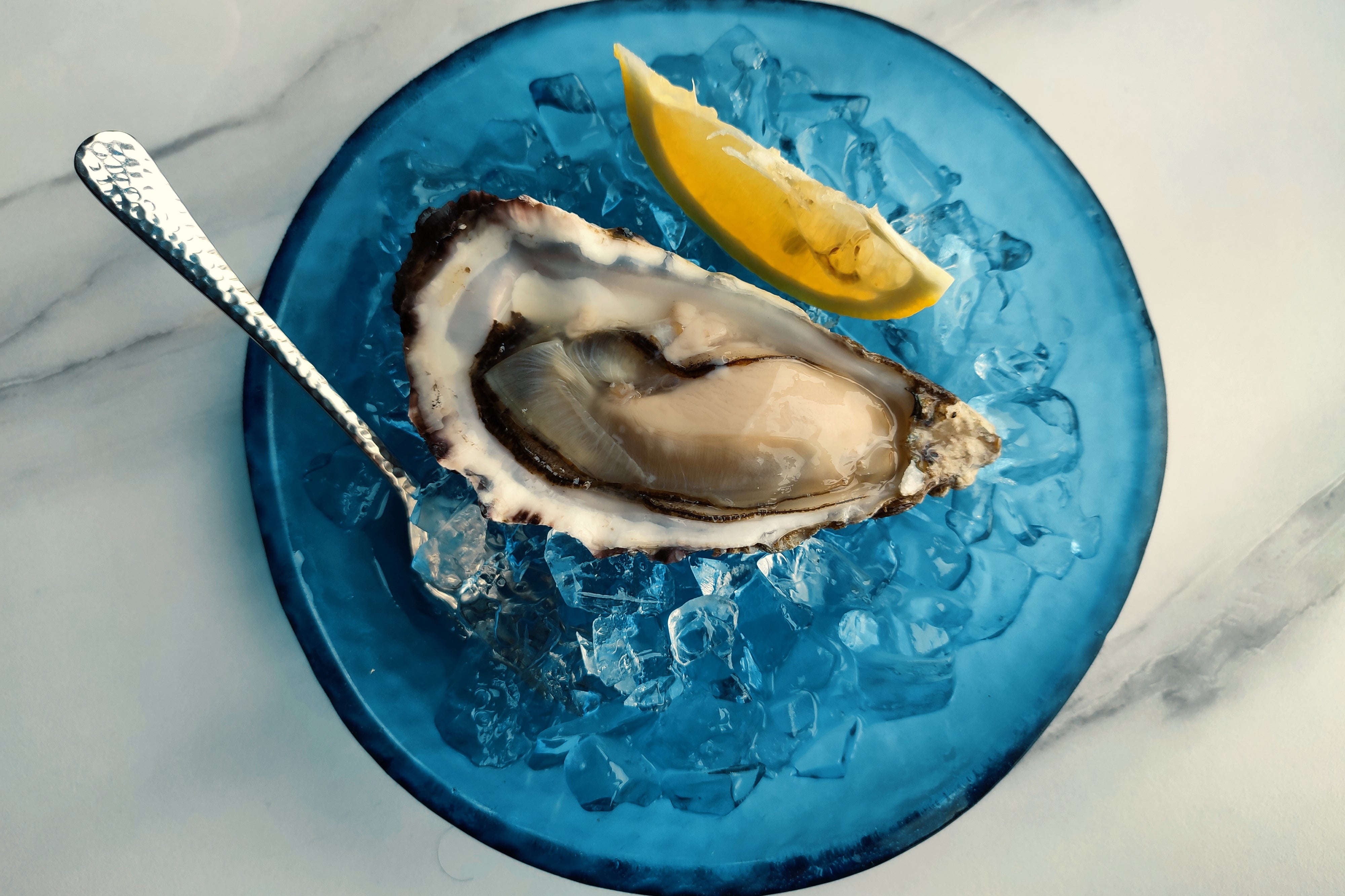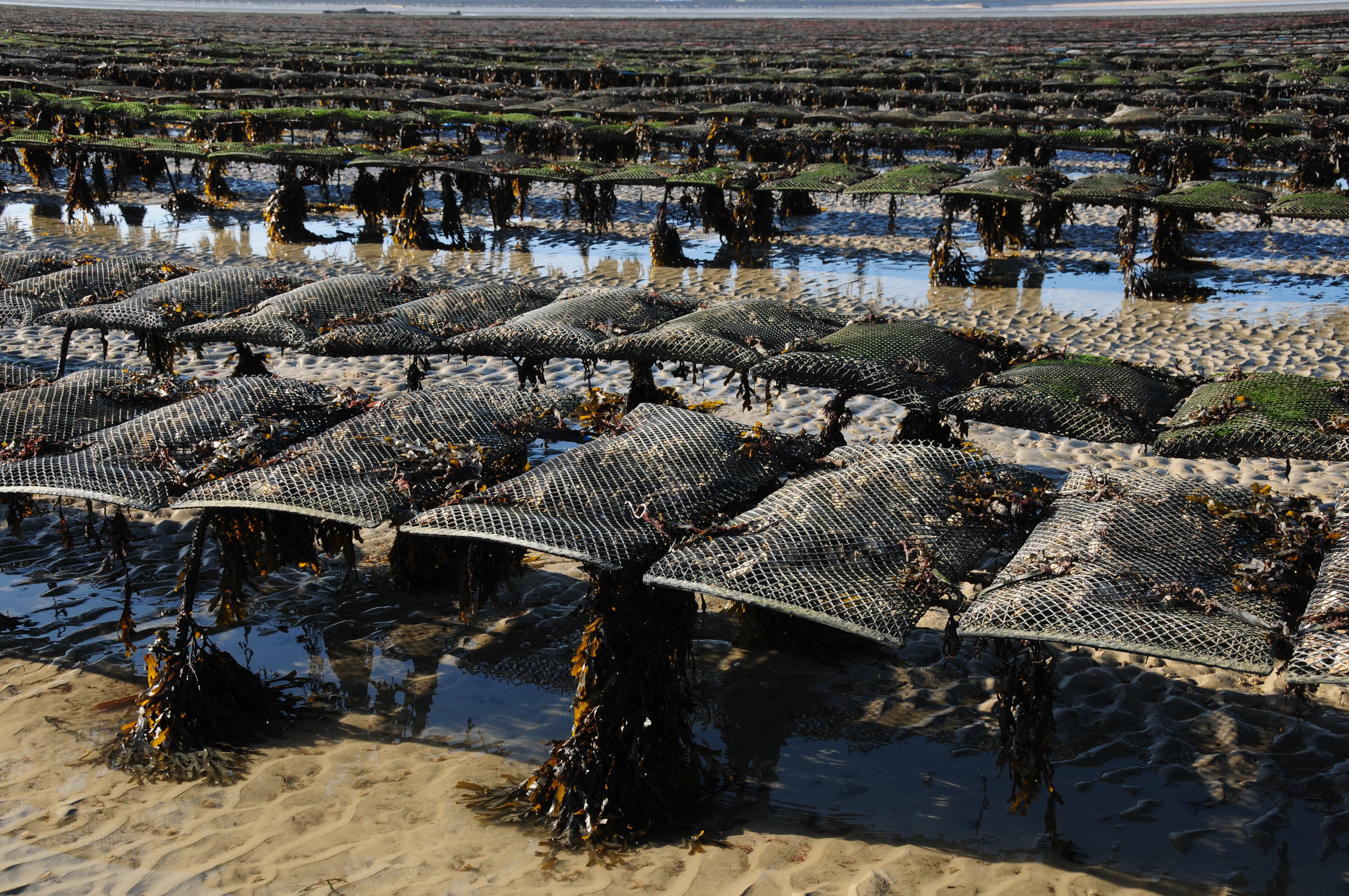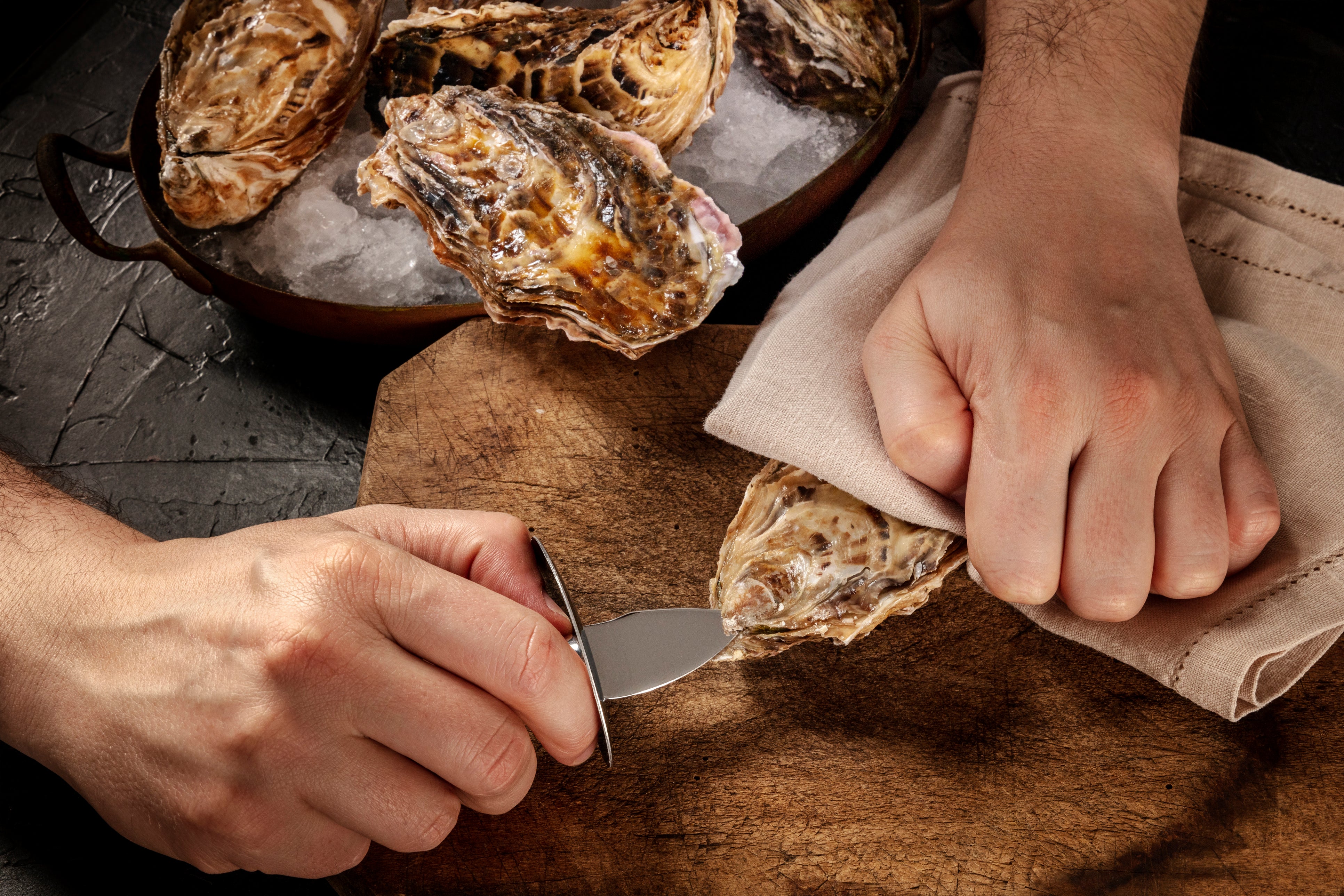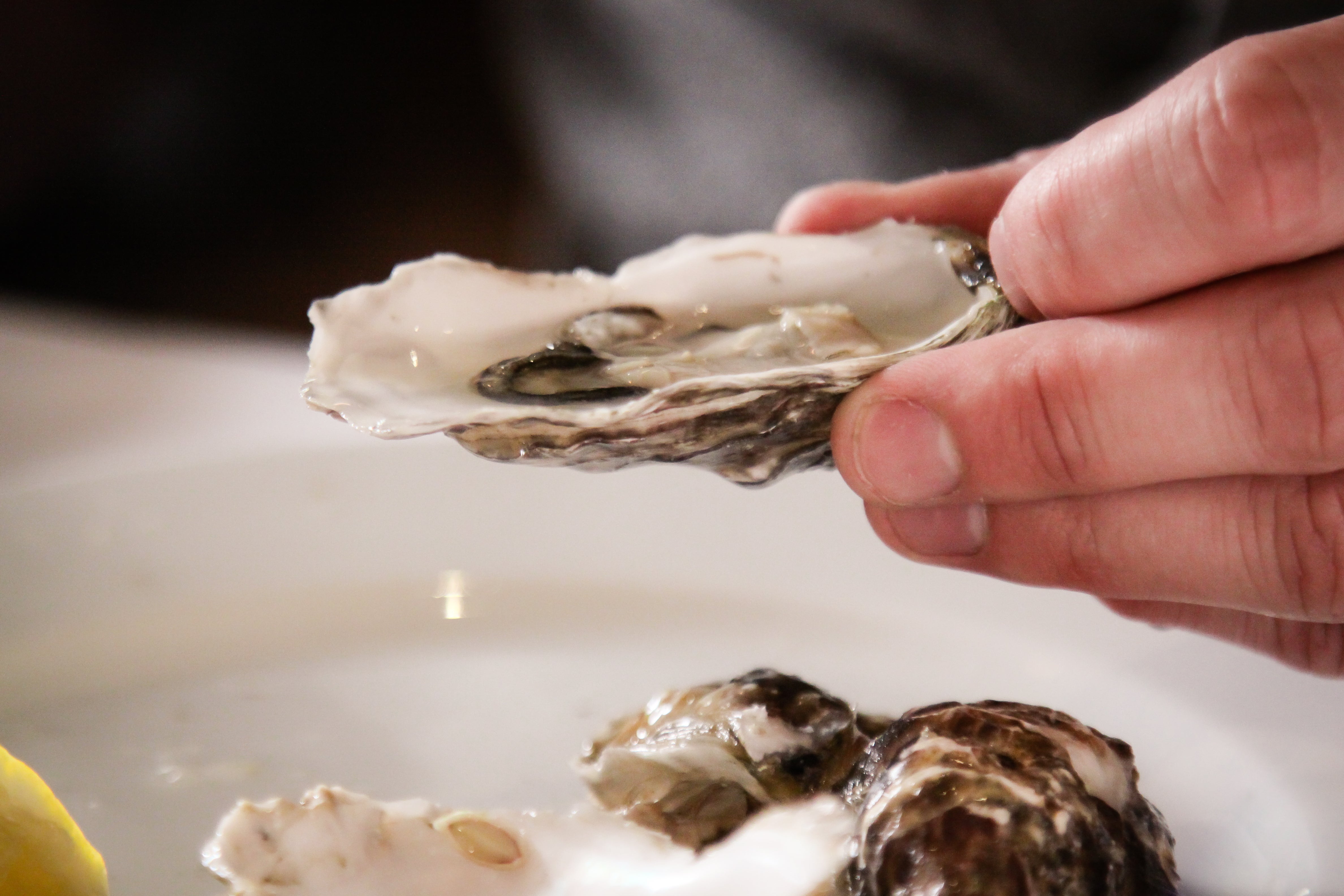Shucking season: A guide to native oysters and the secrets of a true connoisseur
As September ushers in the start of native oyster season, from the pristine waters of Loch Ryan to the famed shores of West Mersea, Hannah Twiggs shares the secrets to selecting, shucking and savouring the best oysters the UK has to offer


The “R” in September means only one thing to gourmands: the arrival of native oyster season.
No longer the preserve of monocle-wearing gentlemen at their private clubs or the go-to dish for champagne-quaffing yuppies, the oyster has been enjoying a revival for some time. British chefs are leading the charge in bringing oysters back to their diners, and wine bars across the UK are catching on to this briny trend.
But before you go rushing out in your best fisherman’s sweater to feast on these slippery morsels, there’s a bit you need to know. Oysters can be a little mysterious, even intimidating. Fear not! This guide will arm you with all the knowledge you need to feel like a native oyster pro.
What exactly is native oyster season?
Native oyster season officially kicks off in September, lasting until the end of April – basically, any month with an “R” in it. There’s a simple reason for this: oysters are left alone during the summer months to do their thing: spawn and replenish their populations. (Fun fact: oysters are hermaphrodites, which means they can switch genders. Imagine the dramatic conversations that could happen down there in the depths.)
But aside from the biology class, why only months with an R? The truth is, when oysters are spawning, they taste about as appetising as your mum’s overcooked turkey at Christmas. During the warm summer months, oysters become milky, flabby and, frankly, not worth the effort. But as the waters cool down, the oysters firm up, their flavours intensify, and they’re ready to take their rightful place as the stars of the shellfish show.
Native oysters: a taste of the sea (and where to find them)
Native oysters, or ostrea edulis (if you’re into impressing people at dinner parties), are the quintessential British oysters. These tasty bivalves are found across the UK’s coastal waters, with notable fisheries in Essex, Kent, Dorset, Devon, Cornwall, Scotland and Ireland. However, if you ask any oyster aficionado where to find the creme de la creme, they’ll probably mention West Mersea in Essex or the fabled Colchester oyster, hailed for its herbaceous, almost sappy taste.

Here’s the lowdown on some of the regions known for their oysters:
- Loch Ryan, Scotland: pristine waters give these oysters a firm texture and clean, pure flavour. They’re like the whisky of oysters, minus the hangover
- West Mersea, Essex: famous for their succulent and plump texture, these oysters are a saline dream, with a nice balance of sweetness and brininess
- Pyefleet Creek, Colchester: arguably the most revered, these are the Louis Vuitton of oysters – luxurious, elegant and, yes, expensive
Wherever you choose, each region offers subtle differences in flavour, so think of it like a wine-tasting tour but with less swirling and more slurping.
Rock oysters: the budget-friendly cousin
If native oysters are the aristocrats of the oyster world, then Pacific rock oysters are the scrappy cousins who showed up to the party uninvited but are still great fun. Introduced to European waters around 30 years ago to boost stocks, rock oysters are available year-round and are typically cheaper than natives. They grow faster because the UK’s relatively mild summer doesn’t tempt them to spawn as it does the natives. This means that while a native oyster might take four years to reach full maturity, a rock oyster can get there in a mere two years.

Rock oysters have a similar succulence to their native counterparts, but many purists argue that they lack the firm texture and complexity of flavour that makes native oysters so special. Still, for an affordable and year-round option, they’re a solid pick, especially if you’re new to the oyster-eating game.
How to choose a good oyster (and avoid a bad one)
Alright, so you’re in the fishmonger or maybe a swanky restaurant, and you’re faced with a tray of oysters, each one looking like a little alien creature inside its hard, jagged shell. How do you know if you’re picking a winner?
- The smell test: a fresh oyster should smell like the sea – think of a brisk ocean breeze, salty and clean, rather than that whiff of the harbour you get near the bins at low tide
- The visual test: the oyster should be plump and full in the shell, glistening with a creamy or ivory-coloured body. Avoid any that look dry or shrivelled – they’ve been sitting around longer than the crusty old fisherman at your local pub
- The shell test: if the shell isn’t firmly closed, give it a little tap. It should respond by closing up tightly like a clam – literally. If it doesn’t, toss it back
Here’s some good news: it’s rare to come across a truly bad oyster these days. All oysters must be purified in clean water for at least 48 hours, so you’re pretty safe. That said, overindulgence can be a problem. Oysters pack a powerful punch of protein and minerals, and too many in one sitting could leave your stomach feeling like it’s been hit by a tidal wave. Pace yourself, especially if you’re washing them down with a bit too much wine.
Shucking: the art of not losing a finger

Once you’ve acquired your precious oyster haul, the next challenge is getting them open without an impromptu trip to A&E. Shucking (opening) an oyster is an art form, but with a bit of practice, you’ll be slinging shells like a pro.
Here’s the traditional method:
- Get a good knife: an oyster knife is essential – none of your kitchen knives will do the trick without a trip to the emergency room. Oyster knives are short, sturdy and won’t break or bend
- The hinge approach: hold the oyster in a tea towel for stability (and to save your hands), and insert the knife into the hinge at the back of the shell. Wiggle it a little until you feel the knife catch
- The twist and pop: once the knife is wedged in, give it a twist. You should hear a satisfying “pop” as the shell opens
- Cut the muscle: run the knife along the top shell to cut the abductor muscle that keeps the oyster locked up tighter than Fort Knox. Lift off the top shell, and voila! You’ve got your oyster
Pro tip: if you’re struggling, cheat a little by microwaving the oysters for a couple of seconds. This causes the shells to open slightly, making it easier to get your knife in. Just don’t overdo it – you don’t want to pre-cook them!
Eating etiquette: to slurp or not to slurp?

Once you’ve successfully opened your oyster, it’s time to eat the little guy. Here’s where opinions differ. Some say you should just toss the whole thing back like a shot of tequila, while others insist you must chew to properly savour the flavour.
The middle ground? Give it a couple of chews before swallowing. This releases the oyster’s complex flavours – salty, sweet, metallic and briny – all dancing across your taste buds. The juice (or “liquor”) inside the shell adds to the experience, so don’t pour it off. Let it mingle with the oyster and enjoy the natural sauce nature has provided.
How to serve them
Oysters are best served chilled on a bed of crushed ice. Keep things simple with a few lemon wedges, a dash of Tabasco sauce, or a mignonette (that’s a fancy vinegar dressing for the uninitiated). However, if you’re feeling a little creative, grilled oysters with garlic butter or oysters Rockefeller (baked with butter, herbs and breadcrumbs) are also popular choices.
Becoming a native oyster connoisseur
The native oyster season in the UK is one of those rare times when you can indulge in a delicious, luxurious treat that also happens to be good for the environment. Native oysters help maintain the balance of marine ecosystems by filtering water, so every time you eat one, you’re doing a little bit of ocean conservation. It’s practically a civic duty.
So, whether you’re slurping down natives from the cool waters of Loch Ryan or enjoying the prized Colchester oyster, take pride in knowing you’re partaking in a centuries-old tradition that’s steeped in flavour, history and a bit of British eccentricity.





Join our commenting forum
Join thought-provoking conversations, follow other Independent readers and see their replies
Comments